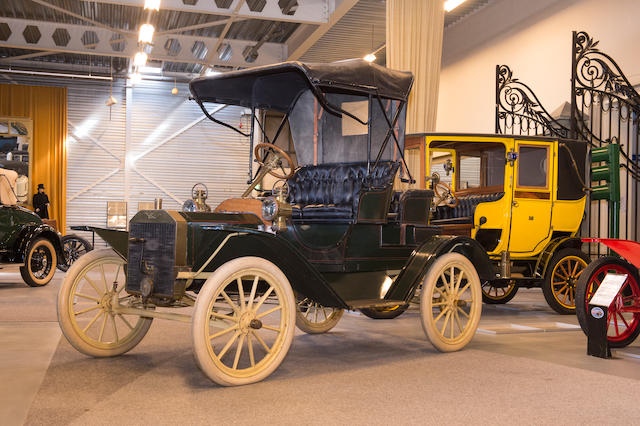ShawnG said:
In reply to Carl Heideman :
I went with him to the auction, helped him buy it, got it sorted out and so far, I'm the only one who's driven it.
We got really lucky, it's about a 30 year-old restoration but it still has the correct carburetor, coil box and coils. We had to have new wheels built for it, de-scale the cooling system and grind the valve stems for proper clearance but that's about all.
It's a blast but it's as different from a Model T as a T is from an A.
He's good at things like that though, he also has a 1910 Sears Model L Runabout that he drives the wheels off of so the S should be no problem.
He does tend to drive them at 10 tenths though so we modified a set of Rocky Mountain Brakes to work on the S.
Your body looks very similar to the one we've been working on. Ours has the mother-in-law seat on the back.
I've heard rumours that these engines are prone to break the crankshaft if they're run hard, mostly because Henry put the flywheel on the front. Is there any truth to that?
Really glad to hear from another person with experience on these. There's a couple former owners locally but their memory isn't so hot these days.
Here's the car, he also bought the yellow T Landaulet behind it. We were bidding on a model A (early A) B, C and K at the same auction but got outbid.

The rumors about the cranks are true. For the rest of you, the flywheel is behind the radiator and has a fan cast into it. They figured it could do both jobs up there, but it tended to twist and break in the process. Model NRS cars are like Model T's in a mirror: Flywheel in front, timer (like a distributor) in back, intake on left, exhaust on right, driver sits on right, etc. T's were flywheel in back, timer in front, intake on right, exhaust on left, driver sits on left. Even the throttle and spark controls on the steering wheel were flipped. Ford learned a lot from NRS cars that they incorporated into T's. The biggest thing they "learned" was to enclose the oiling system. The NRS had a pressurized tank with oil in it. There were drip valves and tubes plumbed to various parts of the engine and transmission and oil dripped on stuff to lube. There is a sump under the engine, but the transmission is completely exposed. Oil drips on it, then flies everywhere. Total loss. So if the tank went empty, bad news. The earlier tanks were pressurized by a small fitting/tube from the exhaust manifold, later cars had a pump.
Needless to say transmission failures were very common, but fortunately someone started making new ones. Someone else makes new blocks, which are often holed. I think someone makes cranks too.
The bodies are similar. N's all had a small trunk. N's had small fenders and step plates, R's had fuller fenders with running boards, S's usually had fuller fenders, splash aprons, and running boards. I think S's were the only ones with the Mother-in-Law seat.
You may know this, but the "bible" for these cars is Pate's Early Ford Automotive Encyclopedia and Carl Pate usually shows up and holds a pre-T meet and greet at Hershey (no Hershey this year, thanks pandemic). His book shows up on ebay/amazon used sometimes: https://www.amazon.com/Pates-Early-Ford-Encyclopedia-1903-1909/dp/B07LDH1ZZD There's also a club: https://earlyfordregistry.com/
There is a collector in Portland who I met at an auction in South Dakota that has several pre-T Fords. I bet he was at the auction you were at too.
10 tenths is a thrill in these cars. They're about 15HP (T's are 20), but they're so light that they're quite a bit faster than a T. Sitting that high in a barrel seat with no windshield makes 35 MPH feel like 135.







 B
B

































